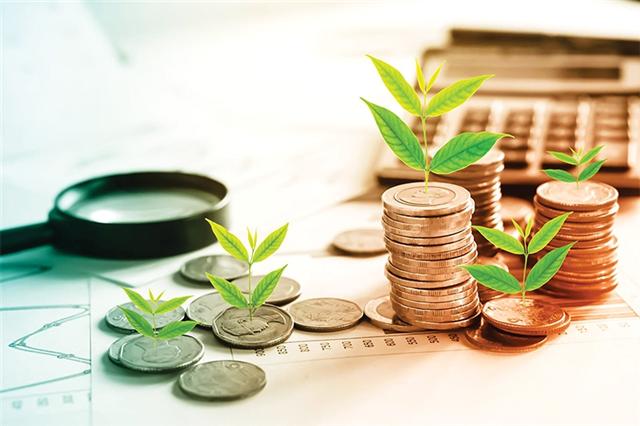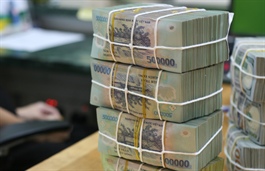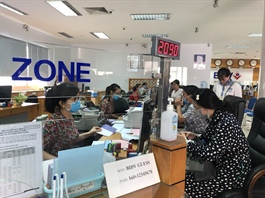Bond issuance power play in energy sector
Bond issuance power play in energy sector
With vast potential and attractiveness, investors are very much keen to increase their foothold in the energy sector by expanding their operations, with the demand for fund mobilisation via corporate bond issuance burgeoning in Vietnam.

Investors are advised to analyse energy corporate bonds carefully
|
Bamboo Capital Group (BCG), the parent company of Bamboo Energy, is betting big on energy. Last week, the group signalled its upcoming batch of bond issuance, with Bamboo Energy to issue VND220 billion ($95.65 million) of bonds.
BCG announced that it will issue more than 68 million shares offered at the price of VND10,000 (43 cents) per share. The expected offering time is in the current quarter, after receiving the certificate of public offering from the State Securities Commission.
BCG has established relationships with organisations such as Hanwha Energy Group of South Korea and JAIC Investment Fund from Japan. A number of investments have been made – for example, Hanwha Energy has poured $5 million into Bamboo Energy to invest in renewable energy projects. With its latest bond issuance, the expected proceeds are around VND680 billion ($29.56 million), with VND420 billion ($18.26 million) used for renewable energy projects, including Phu My 1 Solar Power Plant and Vinh Long Solar Power Plant.
Data compiled by the Hanoi Stock Exchange, financial information provider Finnpro, and Techcombank Securities revealed that among the VND171 trillion ($7.4 billion) of corporate bonds issued in the first six months of this year, renewable energy companies made up for 4 per cent.
The average interest rate of energy bonds was 10.3 per cent per year, only second after the real estate sector which stood at 10.6 per cent per year.
Last month, Nang Luong Son La (Son La Energy) Co., Ltd. also issued five-year bonds to raise more funds.
As of August, Xuan Thien Group’s energy subsidiaries, which include Ea Sup 1, 2, 4, and 5, Xuan Thien Thuan Bac, and Xuan Thien Dak Lak have altogether mobilised funds of around VND12.17 trillion ($529 million).
Xuan Thien Group is the major investor of Xuan Thien-Ea Sup, with the total registered investment of VND50 trillion ($2.17 billion) and capacity of 2,000MW. Local media stated it is one of the largest solar energy plants in Southeast Asia.
Trung Nam Group, one of the country’s prominent energy companies, has mobilised up to VND4.5 trillion ($196 million) via this debt instrument so far this year, with an interest rate of 10.5 per cent per year.
According to local media, Hong Phong 2 Energy JSC has also mobilised VND1.6 trillion ($695.6 million) from 6-year bonds with an interest rate of 10 per cent annually. In August, My Son 1 Solar Power Co., Ltd. successfully issued VND300 billion ($13.04 million) of three-year bonds with an interest rate of 10 per cent per year.
Duong Duc Hieu, head of Equity Research at KB Securities, believes that demand of electricity in Vietnam is expected to grow at around 10 per cent annually. However, there are some delays in the construction of big thermal power plants, which will cause shortages in electricity in the next few years in Vietnam.
Renewables can be a replacement to counter the electricity shortage as their advantages include short construction period, decreasing equipment price, and favourable borrowing policies for green plants.
“Besides this, the supporting selling price policies of the government are also a strong motivation for investors in the renewable energy industry. Therefore, we believe that the renewable energy industry in Vietnam will continue to develop strongly in the next few years,” Hieu told VIR.
On the other hand, the Ministry of Finance previously flagged corporate bonds as risky assets with no credit ratings and no collaterals, as some are issued by overleveraged businesses with significant default risk.
“Normally, each energy project is financed by bank loan rather than corporate bond. Besides bank loans, energy companies issue bonds using company shares and cash flow from existing projects as collateral,” Hieu added.
Money raised from bonds is used to develop new projects and the risks of those bonds arise in two scenarios, Hieu said. “Firstly, when companies use money to develop risky projects not in their core business, it may lead to failure. Secondly, the existing energy projects encounter problems that lead to shortage of cash flow to pay duties to banks and bondholders.”
“Investors should be aware of those risks and be careful in selecting energy corporate bonds,” he added. “They should keep an eye on the company’s leverage ratios, quality of current energy projects, and cash flow statements.”
Most recently, Vietnam aims to raise its renewable energy sources to 15-20 per cent of the total energy supply by 2030 and 25-30 per cent by 2045. The targets have been set in the government’s action plan on the implementation of Vietnam’s national energy development strategy by 2030.
Meanwhile, foreign energy companies remain on the sidelines in this corporate bond competition.






















